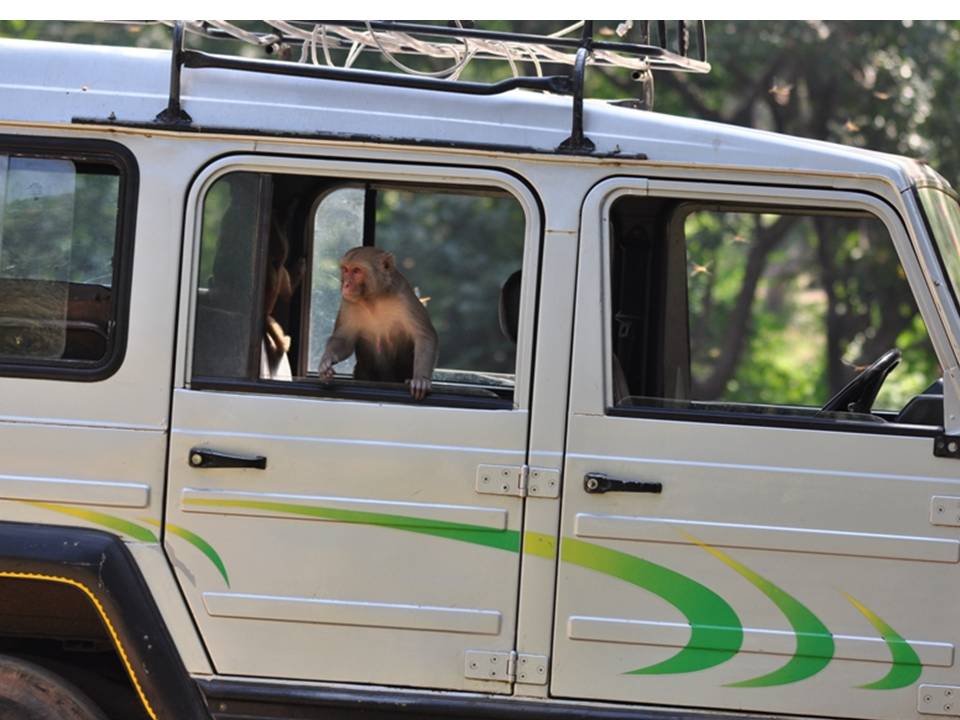Rhesus macaques (Macacamulatta) creating menace for birds and humans in Pachmari.
-Ajay Gadikar
In my last article (published in the March ezine) I tried to share how the ever growing population of Rock Pigeons is causing serious issues to bird diversity in cities.
This time I will try to focus on the Monkey menace and how the Monkeys have became a major threat to many species of birds and also to humans in general.
The monkeys are causing a great disturbance to the birds in the Pachmari and nearby areas. Pachmari hill station is part of the Pachmari bio-sphere which has got sprawling flora and fauna.
I frequent Pachmari and the Satpura tiger reserve which lies adjacent to each other for my bird watching excursions.
In my recent visit to this place I came to know that the bird (especially raptors) population is dwindling in this region. While talking to local bird watchers and guides, I came to know that monkeys are the major reason for this. They destroy the nest
of the birds both on trees and on the ground. They fiercely compete for food (figs) with birds, during the fruiting of local trees in the month of March-April, they eat most of the fruits leaving behind very little for the birds.

In recent years reports of increasing monkey aggression and burgeoning monkey populations have been on the rise in Pachmari. Urban sprawl and deforestation are largely to blame for the increase in monkey-related strife, as buildings and other development
take over an ever-larger share of the habitat of native animals. India’s monkeys especially Rhesus macaques (Macacamulatta), roam free in the streets and temples which are in abundant here. They traditionally enjoy a large measure of respect and indulgence
from the populace that stems from their association with the Hindu deity Hanuman.
Monkeys are upheld by Hindus as a model for all human devotion, and monkeys are, by extension, considered sacred. They have been allowed to go about their business unmolested; in Pachmari you will see that many people leave fruit and other food out in
public spaces for the monkeys, which encourages them to congregate at these places.
In Pachmari these monkeys now attack hotel workers, screech, and wreak havoc with their kitchen material. They have snap power and cable lines. On the streets, they snatch food from people, pick pockets, they have bitten people and threatened visiting
tourists.
Monkey numbers would soon outnumber humans here.
So far there has been no fully viable, effective solution to the monkey overpopulation and aggression crisis. Even though, as one Indian animal-rights spokesman pointed out, humans are as big a problem for the monkeys as the monkeys are for humans. There
is no end in sight to human population growth in India. Forest land will continue to be turned into human habitat, and monkeys will have nowhere to go, but into the cities.
Due to lack of primary predators in this semi urban environment, monkeys will continue to increase in number and it would be difficult to dislodge them from urban spaces.
The forest department should start preparing a comprehensive plan to deal with the monkey menace and also check their growing population which is posing a threat to lives and livelihood of citizens.
A regular census should also be done to know their relative rise in population.
(Ajay Gadikar is a naturalist and bird watcher from Indore)